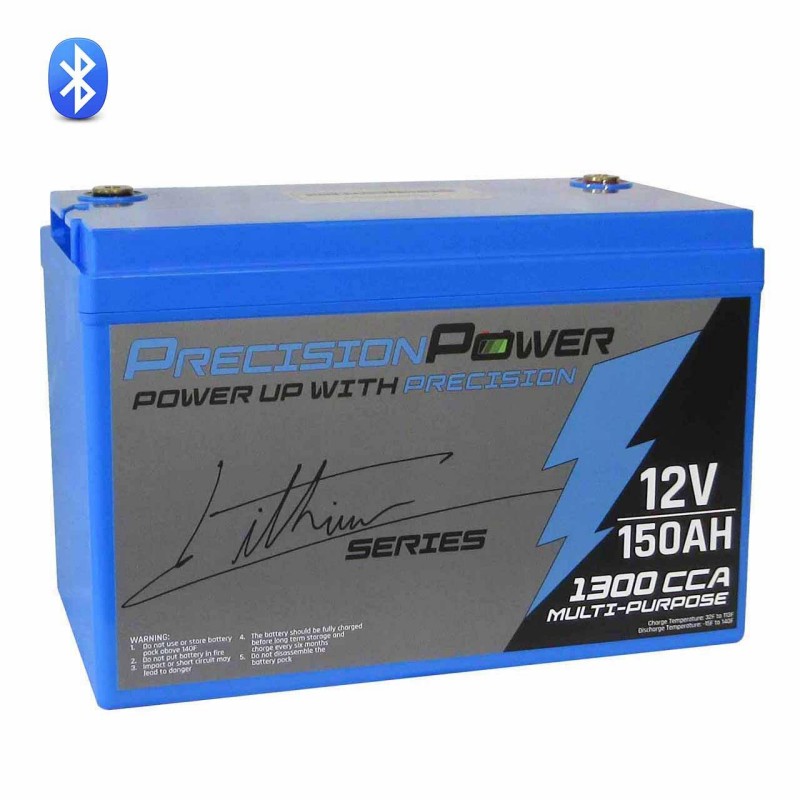In recent years, the demand for renewable energy solutions and efficient energy storage has skyrocketed. Among the many advancements in battery technology, the 36 volt lithium battery stands out due to its impressive capacity, longevity, and versatility. This battery type has gained immense popularity not only for electric vehicles (EVs) but also for applications such as electric bikes, scooters, and renewable energy systems like solar setups. A 36 volt lithium battery provides power-packed performance while offering enhanced safety features and a lightweight design compared to traditional lead-acid batteries. This comprehensive guide will delve into the essential aspects of 36 volt lithium batteries, including their construction, benefits, key applications, maintenance tips, and advancements in battery technology. By the end of this article, you will be well-equipped with knowledge on how to maximize the potential of 36 volt lithium batteries in various contexts.

What is a 36 Volt Lithium Battery?
To fully appreciate the advantages of a 36 volt lithium battery, it’s important to first understand what it is and how it differs from other types of batteries.
Battery Construction and Comfposition
A 36 volt lithium battery consists of multiple lithium-ion cells connected in series to achieve the desired voltage.
- Cell Configuration: The battery typically contains ten 3.6-volt lithium cells wired together to form a 36-volt system. Each cell holds a significant amount of energy relative to its size.
- Chemistry: Lithium-ion batteries utilize lithium cobalt oxide, lithium iron phosphate, or lithium manganese oxide as the active material. This choice of chemistry affects performance, longevity, and safety.
How a 36 Volt System Works
Understanding how a 36 volt system operates gives insight into its applications and benefits.
- Voltage and Energy: The 36-volt configuration efficiently delivers power to devices that require more energy than standard 12-volt batteries can provide. This voltage is ideal for high-performance applications.
- Energy Density: Lithium batteries generally offer a higher energy density compared to lead-acid batteries. Thus, they provide more power without increasing weight significantly.
Advantages of Using a 36 Volt Lithium Battery
The growing popularity of 36 volt lithium batteries can be attributed to several key advantages they offer over other battery types.
Lightweight Design
One of the most significant benefits of a 36 volt lithium battery is its lightweight nature.
- Portability: Lighter batteries enable easier handling and transport. This feature is particularly beneficial in portable devices, electric bicycles, and scooters.
- Improved Efficiency: With heavier batteries, vehicles require more energy to operate. A lighter battery enhances the overall efficiency and performance of electric devices.
Longer Lifespan
36 volt lithium batteries typically have a longer lifespan compared to traditional lead-acid options.
- Cycle Life: These batteries can endure up to 500 to 2000 charge cycles, significantly outlasting lead-acid batteries, which often last only around 300 to 500 cycles.
- Maintenance Requirements: Lithium batteries require less maintenance than lead-acid batteries, offering users greater convenience.
Faster Charging Times
Charging time is critical for users relying on quick replenishment.
- Quick Recharging: A 36 volt lithium battery typically enables faster charging, with some models achieving full charge in just a few hours. This speeds up turnaround time for electric vehicles and tools.
- Smart Charging Systems: Many modern lithium batteries contain built-in Battery Management Systems (BMS), allowing for optimal charging rates and reducing charging time.
Higher Depth of Discharge
Battery longevity depends significantly on discharge levels.
- Discharge Rates: A 36 volt lithium battery can safely discharge up to 80-90% of its capacity. In contrast, lead-acid batteries only allow a 50% depth of discharge without compromising lifespan.
- Effective Usage: This higher discharge capability translates into more usable energy and efficiency, particularly for applications with high power demands.

Environmentally Friendly
Choosing a 36 volt lithium battery can be a more sustainable option as well.
- Reduced Toxicity: Lithium batteries do not contain toxic materials like lead, making them less hazardous to the environment.
- Recyclability: Many lithium batteries are recyclable, further contributing to sustainability in energy storage solutions.
Common Applications of 36 Volt Lithium Batteries
The versatility of 36 volt lithium batteries allows them to be used in a variety of applications.
Electric Vehicles
Electric vehicles are among the most prominent users of 36 volt lithium batteries.
- Performance Electric Bikes: Many premium e-bikes utilize these batteries for extended range and higher speeds, appealing to both commuters and leisure riders.
- Electric Scooters and Mopeds: Lightweight and efficient, 36 volt lithium batteries provide the required power for performance-oriented scooters and mopeds.
Renewable Energy Systems
Renewable energy applications greatly benefit from the use of high-capacity batteries.
- Solar Storage: Individuals frequently use them in solar energy storage systems, allowing efficient use of energy collected during sunny days.
- Off-Grid Systems: A 36 volt lithium battery can provide standby power or serve as an essential part of off-grid power solutions, enabling sustainable living.
Power Tools
Professional-grade power tools commonly utilize 36 volt lithium batteries.
- Cordless Tools: A range of tools, including drills, saws, and lawn equipment, benefit from the power and longevity of lithium batteries, allowing for optimal performance without cords.
- Enhanced Run Time: These batteries provide longer runtime, enabling users to complete tasks without frequent interruptions for charging.
Robotics and Drones
As technology advances, various sectors are discovering the advantages of using 36 volt lithium batteries.
- Remote-Controlled Vehicles: Robotics, such as those used in model cars and unmanned aerial vehicles (UAVs or drones), frequently rely on this battery type for enhanced performance.
- Extended Flight Time: Drones equipped with 36 volt lithium batteries benefit from longer flight times, improving operational capabilities for tasks across industries.
Choosing the Right 36 Volt Lithium Battery
Selecting the right 36 volt lithium battery requires careful consideration of several factors.
Capacity Considerations
Understanding the capacity needed for your specific application is crucial.
- Amp-Hour (Ah) Ratings: Look at the battery’s Ah rating to determine how long it will run various applications. Higher ratings indicate longer usage times.
- Discharge Rate: Knowing your equipment’s power draw will help you match a battery’s capacity to your requirements.
Brand and Quality
Selecting a reputable brand can influence the longevity and performance you receive.
- Quality Manufacturers: Brands known for producing high-quality lithium batteries often come with better warranties and customer service.
- User Reviews: Researching customer feedback can provide insight regarding reliability, performance, and suitability for specific needs.
Battery Management Systems (BMS)
A good BMS is vital for safety and lifespan.
- Protection Features: Look for batteries with BMS that offer protections against overcharging, discharging, and overheating. This ensures both safety and efficiency.
- Monitoring Metrics: Some advanced BMS options allow you to monitor battery metrics, including charge status and power output, enhancing user convenience.
Weight and Size
When choosing a battery, the physical attributes are just as essential as those concerning performance.
- Portability: Consider the weight and dimensions of the battery, especially if it needs to fit in a compact space or be easily transported.
- Compatibility: Ensure the battery physically fits within your device or application while maintaining optimal connectivity.
Maintenance Tips for 36 Volt Lithium Batteries
Proper maintenance can extend the lifespan and enhance performance.
Regular Charging Habits
- Avoid Over-Discharging: Try not to deplete the battery below its recommended discharge level, as this can damage the cells and reduce capacity.
- Charge Appropriately: Use the correct charger and follow manufacturer guidelines for optimal charging procedures.
Storage Practices
- Store in a Cool Place: Avoid exposing batteries to extreme heat or cold, as this can affect performance and lifespan.
- Partial Charge for Long Term: When storing for extended periods, maintain a partial charge (around 50-70%) to protect the battery’s health.
Monitoring Performance
- Check for Damage: Regularly inspect the battery for signs of swelling, leaks, or damage, and address any issues immediately.
- Use Monitoring Tools: Consider using tools or apps to monitor your battery’s performance and charge cycles effectively.
Innovations in 36 Volt Lithium Battery Technology
As technology evolves, advancements in battery design and technology continue to emerge, enhancing the capabilities and efficiencies of 36 volt lithium batteries.
Enhanced Energy Density
Emerging technologies focus on increasing energy density, allowing smaller batteries to store more power.
- Next-Generation Materials: Researchers are exploring materials that could improve energy density while maintaining safety and longevity.
Fast Charging Capabilities
Improvement in fast-charging technology allows users to power their batteries more quickly.
- Rapid Charging Solutions: Some brands are developing fast-charging options that can significantly reduce downtime, allowing for quick replenishment in critical situations.
Smart Batteries
The integration of technology into batteries is on the rise, bringing new functionalities.
- IoT Connectivity: Some modern 36 volt lithium batteries come equipped with connectivity features, allowing users to track battery performance and health via smartphone apps.
- Automatic Diagnostics: Smart batteries can perform self-diagnostics and alert users to any issues that may arise, enhancing overall effectiveness.

Conclusion
Understanding what a 36 volt lithium battery can offer is crucial for anyone interested in maximizing performance in various applications. Whether you are using it in electric vehicles, renewable energy systems, power tools, or drones, this battery type provides a robust and reliable solution.
The benefits, including lightweight design, longer lifespan, and faster charging times make it an ideal choice for demanding tasks. Moreover, staying informed about how to choose the right battery and ensure proper maintenance guarantees optimal performance and longevity.
As technology continues to advance, the 36 volt lithium battery is likely to evolve even further, enhancing its capabilities in an ever-growing list of applications. By embracing this innovative energy solution, you can elevate your experience—whether you’re a casual user or a tech enthusiast—while enjoying the benefits of modern battery technology.